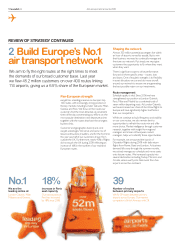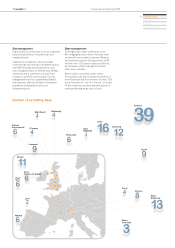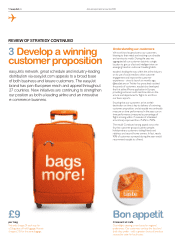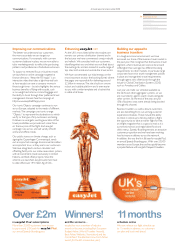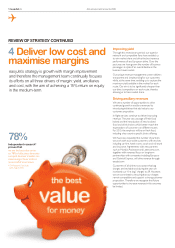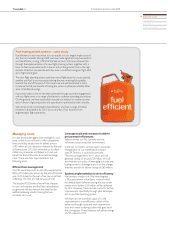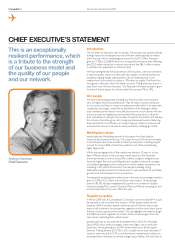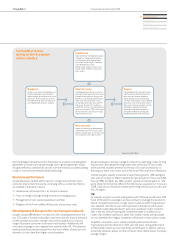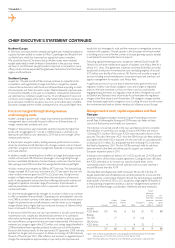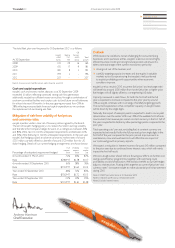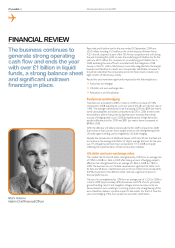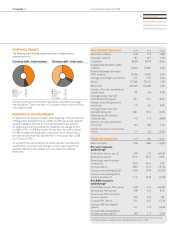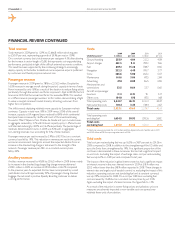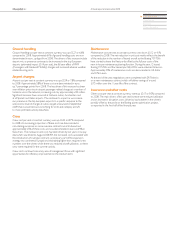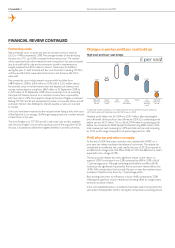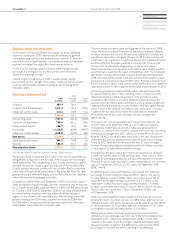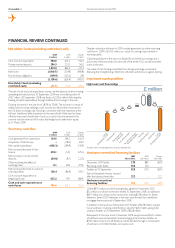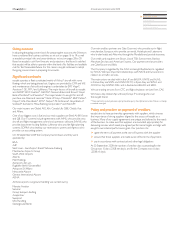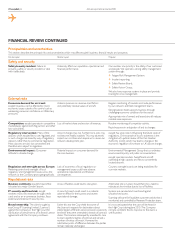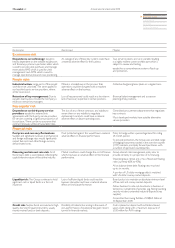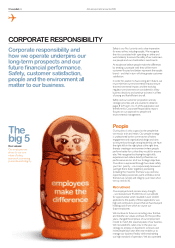EasyJet 2009 Annual Report Download - page 22
Download and view the complete annual report
Please find page 22 of the 2009 EasyJet annual report below. You can navigate through the pages in the report by either clicking on the pages listed below, or by using the keyword search tool below to find specific information within the annual report.
20 easyJet plc Annual report and accounts 2009
q
FINANCIAL REVIEW
Reported prot before tax for the year ended 30 September 2009 was
£54.7 million including £11.0 million prot on the disposal of three Airbus
A321 aircraft, acquired as part of the GB Airways acquisition and sold during
the year. Excluding this prot on sale, the underlying prot before tax for the
year was £43.7 million; this compares to an underlying prot before tax in
2008, excluding the one-off costs associated with the integration of GB
Airways, of £123.1 million. GB Airways is now fully integrated into the easyJet
business and therefore its results are not separately identiable. However, it
should be noted that the comparative period to these results includes only
eight months of GB Airways activity.
Results this year have been signicantly impacted by the following factors:
Fuel prices and hedging
q
US dollar and euro exchange rates q
Reduction in aircraft utilisation q
Fuel prices and hedging
Total fuel cost amounted to £807.2 million in 2009, an increase of 13.9%
compared to 2008, equating to a cost per seat of £15.28, up £1.63 per seat or
11.9%. The average market price for jet fuel during 2009 was $595 per metric
tonne (excluding fees and taxes) compared to $1,070 in 2008, driven by the
extraordinary spike in fuel prices during that year. However, after taking
account of hedging taken out in 2008 during the period of high fuel prices,
easyJet’s effective price for 2009 was $951 per metric tonne compared to
$948 in 2008.
With the effective US dollar price broadly at for 2009 compared to 2008,
the increase in fuel cost per seat is largely driven by the strengthening of the
US dollar against sterling, partly mitigated by US dollar hedging.
Despite the introduction of additional heavier A320 aircraft into the eet and
an increase in the average load factor of 1.4ppt, average fuel burn for the year
was 715 US gallons per block hour compared to 717 in 2008, principally
reecting the implementation of fuel conservation initiatives.
US dollar and euro exchange rates
The market rate for the US dollar strengthened by 22% from an average rate
of 1.99/£ in 2008 to 1.56/£ in 2009; after taking account of hedging, easyJet’s
effective rate strengthened from an average of 1.96/£ in 2008 to 1.78/£ in
2009. The business has no US dollar revenues but signicant US dollar costs
for fuel, aircraft leases, maintenance and some loan interest and consequently
the 9% movement in the effective dollar rate had a signicant impact on
nancial performance.
The euro has strengthened by 12% from an average rate of 1.32/£ in 2008 to
1.16/£ in 2009. Approximately 42% of revenues and 31% of costs (principally
ground handling, airport and navigation charges and some crew costs) are
denominated in euro resulting in a net long position; the strengthening of the
euro, therefore, delivers a positive impact to the results. For the rst time this
year some hedging of the euro surplus has also been undertaken.
The business continues to
generate strong operating
cash flow and ends the year
with over £1 billion in liquid
funds, a strong balance sheet
and significant undrawn
financing in place.
Mark Adams
Interim Chief Financial Officer


